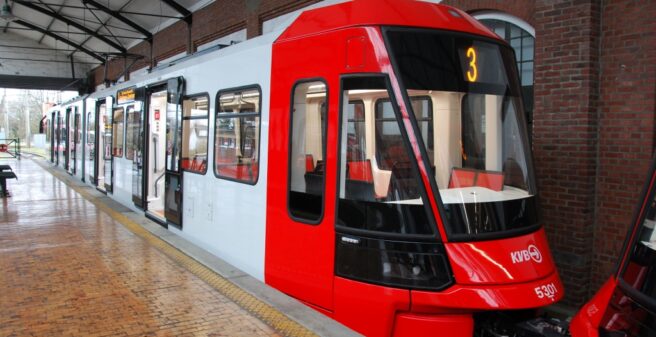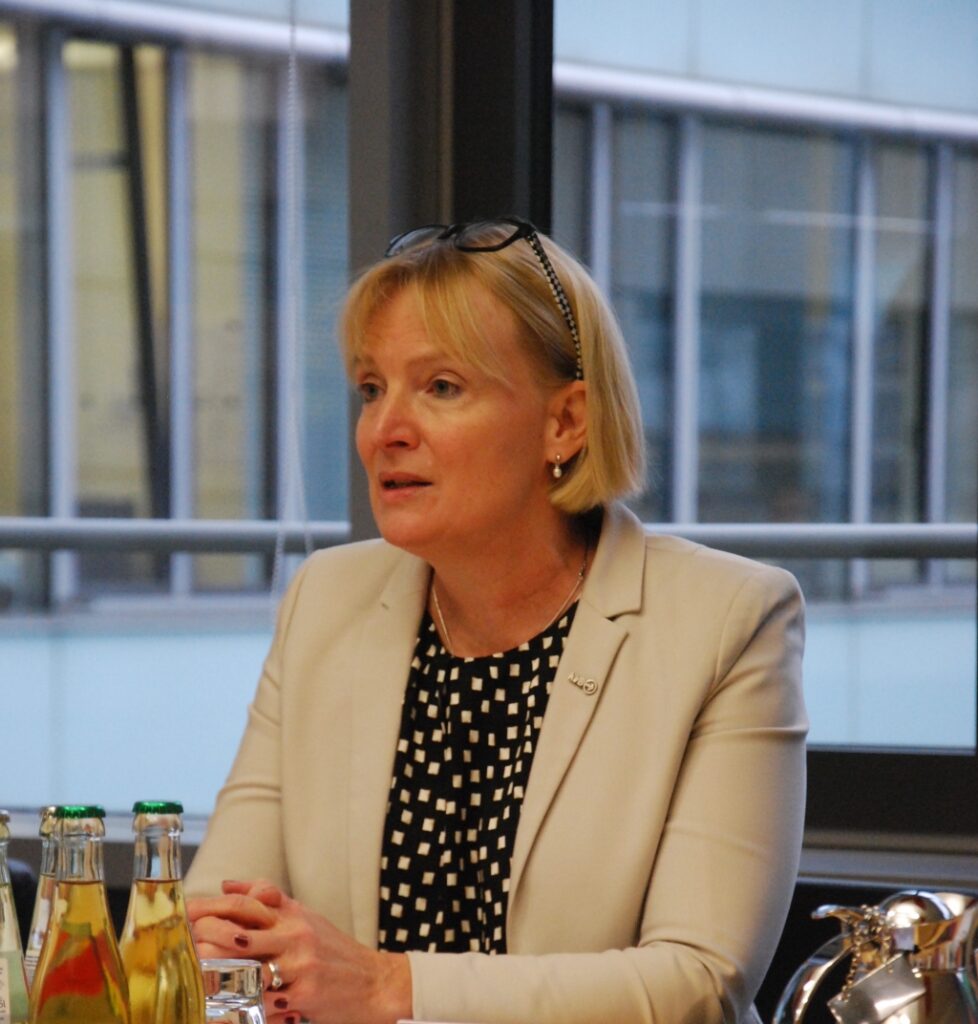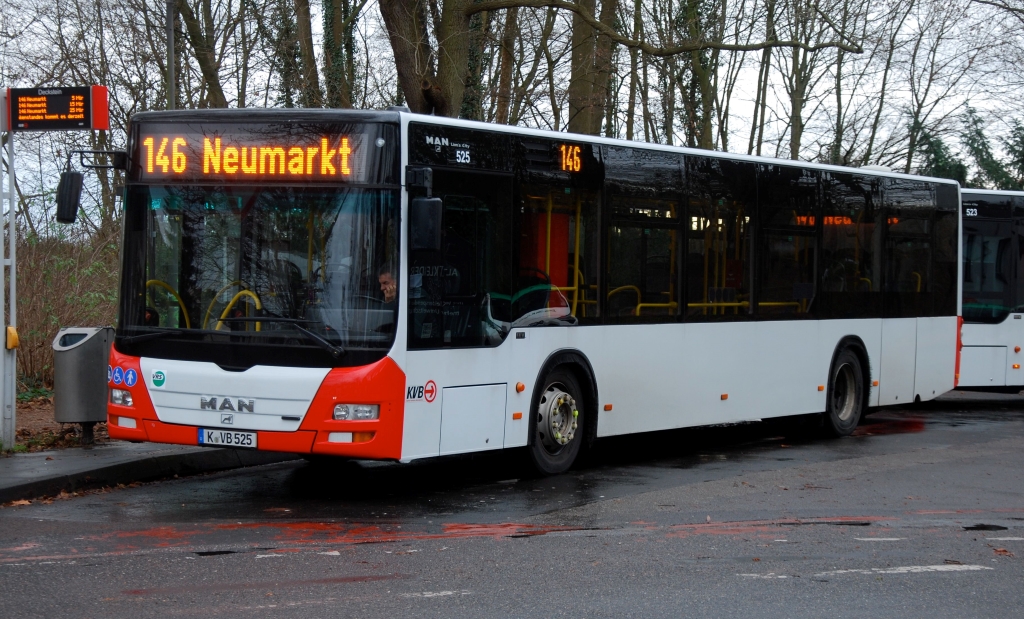
We all know it and see it every day: our public transport companies are suffering from massive staff shortages. This does not only affect Cologne’s KVB, which had invited to a press conference on this topic and on the subsequently necessary timetable restrictions on 4 January 2023. Similar issues are facing other public transport operators, most recent examples include Hamburger Hochbahn and Essen’s Ruhrbahn: Due to massive staff shortages, both have to reduce the frequency of service on a number of lines. A lot of other operators have introduced or will introduce similar measures.
KVB Cologne summarised the problem at their press conference in a few words: „On the bus we can help ourselves involving additional subcontractors, however, on the our light rail system we have to drive ourselves, help is not possible on the rail ndtwork.”
Staff shortage and its reasons
At present, the staff shortage has one main reason: exceptionally high sickness rates. The KVB reported a current rate of 20 per cent of staff now absent due to illness. “Based on the experience of many years, we calculated with a sickness rate of 11 per cent and also calculated our duty rosters accordingly. We could not (and, according to all experience, did not have to) expect a rate almost twice as high, and therefore we could not include it in our duty rosters.”
In addition, the baby boomers are now reaching retirement age and therefore leaving the company. “It gets more and more difficult to find a replacement for every employee who leaves.” Fluctuation rate is currently 4%.

The current quality of service
“The current operating quality,” says Stefanie Haaks, “meets neither the expectations of our customers nor our own standards. We are in the same situation as many other companies in the local transport sector, which are in a similarly difficult situation.” In Cologne, 10 to 15% of all light rail journeys were cancelled at times.
Someone might come up with the idea to increase salaries as a way out to attract more people to work for the company. At the press conference, KVB clearly rejected this idea: “It would then become so much more expensive to provide our services that we would have to drastically raise fares to compensate. And nobody can want that, because then the passengers would stay away.”
So anyone hoping for a short-term sustainable improvement in the staff situation is likely to be disappointed. In this author’s opinion, we will have to live with the staff shortage for some time.
Poor communication of cancellations in recent times
The KVB do not deny that the communication about when and why train services are cancelled has not been perfect lately. However, the main reason for this is that at the moment all information on disruptions and the like still has to be entered manually into the system. There were so many messages that the control centre simply could not keep up. “The people at the control centre primarily have other tasks than entering incident reports. Change is in sight, he said, even if not immediately tomorrow. “When we are finished with the installation of ECTS, the system will record and enter such messages on its own. Then the corresponding notices will automatically appear on the displays.” Until then, however, it will still take some time.

The measures planned by KVB in detail
First of all: in the morning until 9 a.m. there will be no changes to the timetable. “During this time we have the highest demand for our services, so we will continue to offer our normal services. 5% of all passenger journeys are made until 9 a.m.: to work, to school, etc.
The first measures with which the KVB wants to counteract the staffing problem already took effect on 6 January. As of this date, the afternoon reinforcement extra services on lines 1, 9 and 15 were cancelled. In return, more vehicles are in service on the light rail lines 4, 13 and 18, on which the current timetable provides for a “short turnaround” of four minutes or less at the final stop. Reliablity should signifantly increase. These measures alone will reduce the number of services in light rail operations to such an extent that a largely stable service can be provided.”
Further measures take effect on 01 March:
- Line 4 will only run between (Leverkusen-)Schlebusch and Leyendeckerstraße after 9 a.m.
- Line 5 will run every 20 minutes on the entire route after 9 a.m.
- On line 7, there will be some repeater services in the morning.
- On line 9, there is one additional trip in the morning in the area on the right bank of the Rhine.
- Line 12 also runs every 20 minutes between Niehl and Merkenich after 9 a.m.
- Line 18 no longer runs to Thielenbruch after 9 am. In return, line 13 will be extended from Vischeringstraße to Thielenbruch in order to relieve line 3 and provide a connection to the district centre of Mülheim.
On the section between Buchheim and Klettenberg, line 18 will run every 10 minutes instead of every 5 minutes. Between Klettenberg and Schwadorf, the service will continue to run every 10 minutes, and between Schwadorf and Bonn Central Station, the service will run every 20 minutes.
Line 17 will only run every 20 minutes, but with double traction instead of single cars.
KVB’s CEO Haaks: “Of course, we have also intensively examined other possibilities to reduce the timetable. For example, instead of going back to a 20-minute frequency, we could achieve our goals with a 15-minute frequency. But because of the connections to the bus lines, we decided on the 20-minute interval.” There were also, of course, economic aspects to consider.
And she continues: “We are now trying to walk a tightrope between what we can expect from our passengers and what we can expect from our staff. The measures now planned also leave us with the flexibility to reinforce operations again when the sickness rate drops again.”
Staff recruitment
From January, the plan is to train significantly more driving staff. At present, 80 people are to go through the driving school. But retrenchment is coming here too: “In November we had planned a new training course for 20 new staff. 17 showed up – and also started the training, the other three simply weren’t there. No cancellation, they simply weren’t there. To this day we haven’t heard from them …”
And: “Those who started their training with us in autumn are only available as drivers in summer.”
And on the question of whether students as temporary drivers could alleviate the situation: “Yes, we used to have ‘student drivers’. But our experience with them was not overall positive. For example, they liked to cancel their duty at extremely short notice, so that the control centre had great difficulty in finding someone else who was willing to take over.”



